-
Antenna-equipped garments here
To make communications devices more reliable, researchers are working on incorporating radio antennas directly into clothing, using plastic film and metallic thread; the new antenna design has a range four times larger than that of a conventional antenna worn on the body — one that is used by American soldiers today
-
-
Columbine lessons helped thwart Tampa school tragedy

Police, having learnt the lessons of the 1999 Columbine High School massacre in Colorado, was in a better position to prevent violence in Tampa, Florida, last week; many school districts have threat assessment teams to try to connect the dots if there is a troubled, and potentially violent, student in their mix
-
-
Researchers developing graffiti analysis app
Law enforcement officials could soon have an app for their mobile phones that allows them to snap a picture of gang graffiti and have its meaning translated; gangs often use graffiti as a way of communicating messages like challenges or warnings to rival gangs and understanding its meaning could help fight crime
-
-
Micro Unmanned Ground Vehicle helps soldiers, first responders
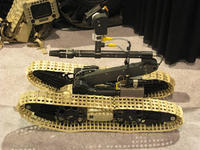
Weighing just over ten pounds, Dragon Runner 10 (DR10) is small enough to carry in an assault pack and rugged enough to throw into buildings and hostile environments; the DR10 has multiple sensor and payload options, and thus is suitable for reconnaissance and surveillance missions to support small military units, patrols, and first responder teams
-
-
New tool helps visualize post-event disaster environments
Using iPad mobile devices, emergency preparedness officials and first responders participating last month in the FEMA’s National Level Exercise 2011 (NLE-11), were able, for the first time, to make use of a new, science-based software tool that allows them to view and modify accurate models of building damage and other post-event disaster effects
-
-
Phoenix police banned from sporting tattoos
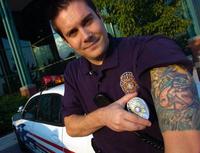
In an effort to present a more professional image, an increasing number of police departments across the United States are requiring officers to cover up their tattoos; the Phoenix police department recently began requiring its officers to cover its tattoos, a move that has generated criticism due to the intense Arizona heat
-
-
Innovative disaster communication tech developed
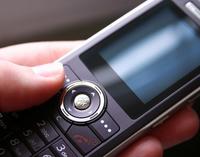
Communication networks typically collapse when they are needed most — during and in the immediate aftermath of massive disasters; researchers have developed a — an innovative wireless system called LifeNet designed to help first responders communicate after disasters; LifeNet is a mobile ad-hoc network designed for use in highly transient environments that requires no infrastructure such as Internet, cell towers or traditional landlines
-
-
Ensuring reliable wireless alarm beacons for first responders
Wireless emergency safety equipment could save lives — if signals are transmitted reliably; NIST is studying interference between Personal Alert Safety Systems (PASS) with wireless alarm capability, and radio-frequency identification (RFID) systems
-
-
Autonomous multi-target, multi-user tracking capability
An autonomous multi-sensor motion-tracking and interrogation system reduces the workload for analysts by automatically finding moving objects, then presenting high-resolution images of those objects with no human input
-
-
New rescue robot can reach trapped miners, people under rubble
A new rescue robot can find dangers — poisonous gases, flooded tunnels, explosive vapors, and unstable walls and roofs — and provide relief to trapped miners or people buried under rubble; it is able to navigate through eighteen inches of water, crawl over boulders and rubble piles, and move in ahead of rescuers to evaluate precarious environments and help plan operations
-
-
Pakistan likely let China examine U.S. stealth helo
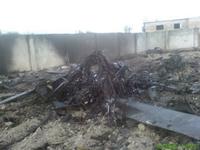
U.S. intelligence officials believe that Pakistan’s intelligence service allowed Chinese military engineers to examine the wreckage of a new stealth helicopter used in the raid that killed Osama bin Laden; the helicopter was damaged in the assault on bin Laden’s compound in Abbottabad, Pakistan in May and Navy SEALs were forced to leave it behind
-
-
Face-mapping app for smartphone searching
A new app, when combined with a centralized server, combs people’s cell phones looking to find photos that have a face in them that match what someone is looking for; the app could be used to look for an abducted child, or a criminal hiding in crowds
-
-
Anonymous retaliates against BART
The hacking collective Anonymous released personal data on Sunday belonging to more than 2,000 public transport customers in the San Francisco area in retaliation for the Bay Area Rapid Transit (BART) system’s shutdown of mobile phone service on Thursday night
-
-
Day of "solar" soldiers nears
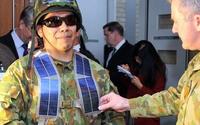
Researches develop wearable light-weight solar panels which will allow soldiers to generate power in the field and reduce the need for batteries for their electronic devices; they will also establish a power supply that keeps electronic devices operational throughout the duration of missions
-
-
Marines deploy bomb-sniffing dog alternative
When bomb-sniffing dogs at Camp Lejeune, the Marine base in North Carolina, are unavailable, military police turn to Fido; the Fido XT Explosives Detector is a handheld device that is capable of sniffing out explosives or residuals in vehicles
-
More headlines
The long view
Tantalizing Method to Study Cyberdeterrence
Tantalus is unlike most war games because it is experimental instead of experiential — the immersive game differs by overlapping scientific rigor and quantitative assessment methods with the experimental sciences, and experimental war gaming provides insightful data for real-world cyberattacks.
Using Drone Swarms to Fight Forest Fires
Forest fires are becoming increasingly catastrophic across the world, accelerated by climate change. Researchers are using multiple swarms of drones to tackle natural disasters like forest fires.
Testing Cutting-Edge Counter-Drone Technology
Drones have many positive applications, bad actors can use them for nefarious purposes. Two recent field demonstrations brought government, academia, and industry together to evaluate innovative counter-unmanned aircraft systems.
European Arms Imports Nearly Double, U.S. and French Exports Rise, and Russian Exports Fall Sharply
States in Europe almost doubled their imports of major arms (+94 per cent) between 2014–18 and 2019–23. The United States increased its arms exports by 17 per cent between 2014–18 and 2019–23, while Russia’s arms exports halved. Russia was for the first time the third largest arms exporter, falling just behind France.
How Climate Change Will Affect Conflict and U.S. Military Operations
“People talk about climate change as a threat multiplier,” said Karen Sudkamp, an associate director of the Infrastructure, Immigration, and Security Operations Program within the RAND Homeland Security Research Division. “But at what point do we need to start talking about the threat multiplier actually becoming a significant threat all its own?”
The Tech Apocalypse Panic is Driven by AI Boosters, Military Tacticians, and Movies
From popular films like a War Games or The Terminator to a U.S. State Department-commissioned report on the security risk of weaponized AI, there has been a tremendous amount of hand wringing and nervousness about how so-called artificial intelligence might end up destroying the world. There is one easy way to avoid a lot of this and prevent a self-inflicted doomsday: don’t give computers the capability to launch devastating weapons.
